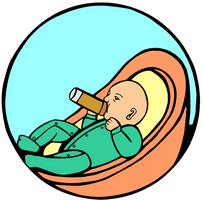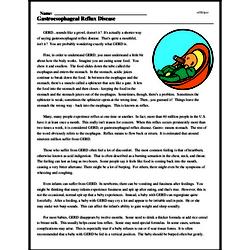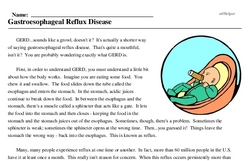Gastroesophageal Reflux Disease
GERD...sounds like a growl, doesn't it? It's actually a shorter way of saying gastroesophageal reflux disease. That's quite a mouthful, isn't it? You are probably wondering exactly what GERD is.
First, in order to understand GERD, you must understand a little bit about how the body works. Imagine you are eating some food. You chew it and swallow. The food slides down the tube called the esophagus and enters the stomach. In the stomach, acidic juices continue to break down the food. In between the esophagus and the stomach, there's a muscle called a sphincter that acts like a gate. It lets the food into the stomach and then closes - keeping the food in the stomach and the stomach juices out of the esophagus. Sometimes, though, there's a problem. Sometimes the sphincter is weak; sometimes the sphincter opens at the wrong time. Then...you guessed it! Things leave the stomach the wrong way - back into the esophagus. This is known as reflux.
Many, many people experience reflux at one time or another. In fact, more than 60 million people in the U.S. have it at least once a month. This really isn't reason for concern. When this reflux occurs persistently more than two times a week, it is considered GERD, or gastroesophageal reflux disease. Gastro- means stomach. The rest of the word obviously refers to the esophagus. Reflux means to flow back or return. It is estimated that around nineteen million suffer from GERD.
Those who suffer from GERD often feel a lot of discomfort. The most common feeling is that of heartburn, otherwise known as acid indigestion. That is often described as a burning sensation in the chest, neck, and throat. The feeling can last as long as two hours. Some people say it feels like food is coming back into the mouth, causing a very bitter aftertaste. There might be a lot of burping. For others, there might even be the symptoms of wheezing and coughing.




